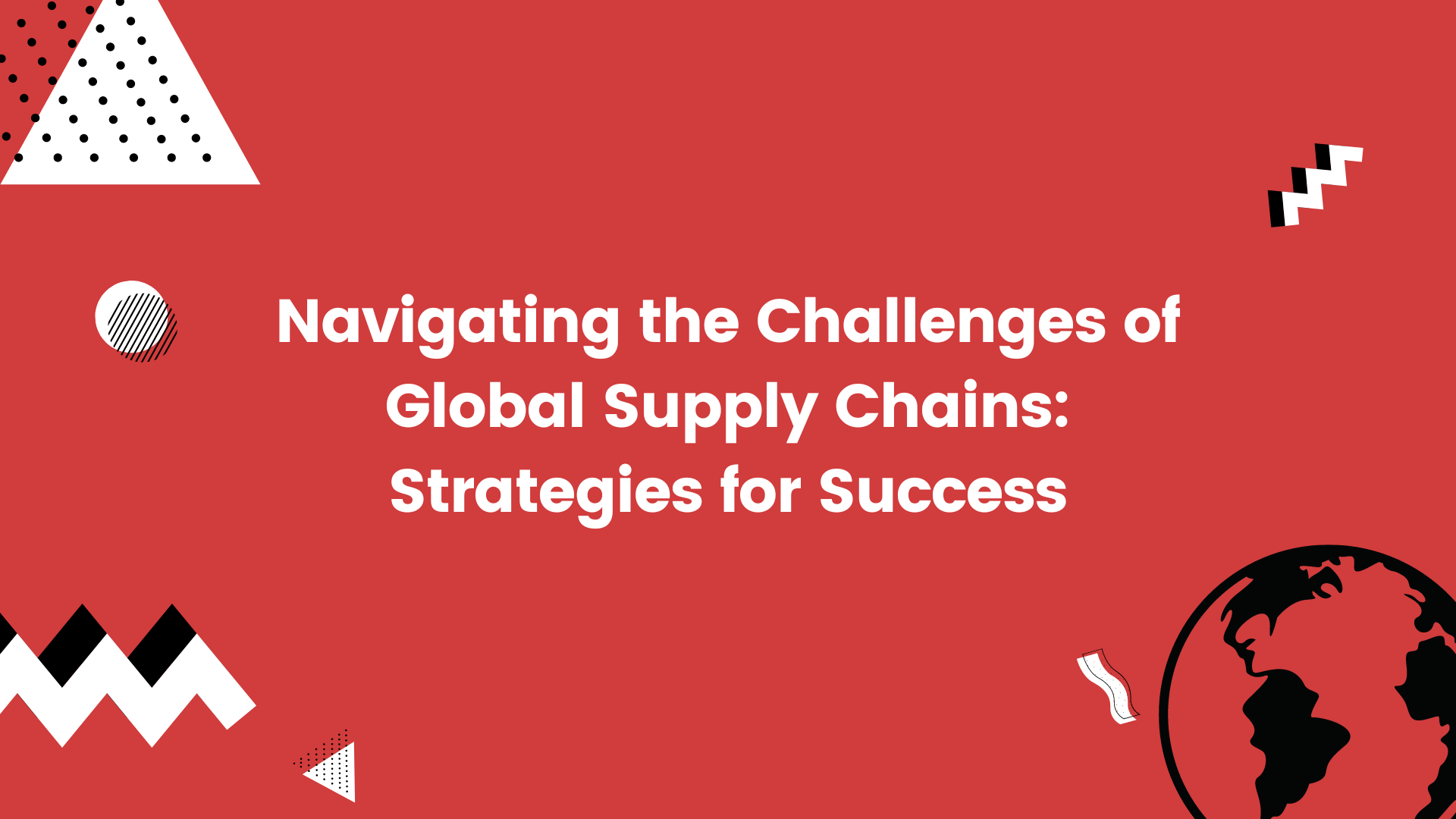In an interconnected world where goods traverse continents before reaching consumers’ hands, global supply chains serve as the backbone of modern commerce. However, with great opportunities come great challenges. Navigating the complexities of global supply chains requires adept management and strategic foresight. Let’s delve into some of the most pressing challenges faced by businesses operating in global supply chains, along with strategies to overcome them.
1. Supply Chain Disruptions:
Disruptions, whether caused by natural disasters, geopolitical tensions, or pandemics, can wreak havoc on global supply chains. Mitigating such risks requires robust risk management strategies, including diversifying suppliers, maintaining safety stock, and leveraging technology for real-time visibility into supply chain operations. Additionally, fostering collaborative relationships with suppliers fosters resilience, enabling swift responses to unforeseen disruptions.
2. Complexity and Fragmentation:
Global supply chains often span multiple countries, cultures, and regulatory environments, leading to inherent complexity and fragmentation. Standardizing processes, adopting common technological platforms, and implementing harmonized regulatory compliance measures can streamline operations and enhance coordination across the supply chain network. Furthermore, investing in talent development and cross-cultural training equips teams to navigate the intricacies of global business environments effectively.
3. Demand Volatility:
Fluctuations in consumer demand, market trends, and geopolitical dynamics contribute to demand volatility, challenging supply chain planning and forecasting efforts. Employing advanced analytics, machine learning, and demand sensing technologies enables businesses to glean insights from vast datasets, improving demand forecasting accuracy and agility. Additionally, fostering agile supply chain practices, such as dynamic inventory management and flexible production capabilities, empowers organizations to respond swiftly to shifting demand patterns.
4. Logistics and Transportation Challenges:
Efficient transportation and logistics are critical for the seamless flow of goods within global supply chains. However, navigating congested ports, volatile fuel prices, and capacity constraints poses significant challenges. Implementing lean logistics practices, optimizing transportation routes, and leveraging digital freight platforms enhance efficiency and cost-effectiveness. Embracing sustainable transportation initiatives not only reduces environmental impact but also enhances supply chain resilience and competitiveness.
5. Cybersecurity Threats:
In an increasingly digitalized supply chain landscape, cybersecurity threats loom large, jeopardizing sensitive data and operational continuity. Implementing robust cybersecurity measures, including data encryption, network segmentation, and employee training, fortifies defenses against cyber threats. Collaborating with trusted technology partners and staying abreast of emerging cybersecurity trends and best practices further enhances resilience in the face of evolving threats.
6. Supplier Relationship Management:
Strong supplier relationships are the cornerstone of successful global supply chains. Cultivating transparent communication, fostering mutual trust, and establishing long-term partnerships foster collaboration and innovation. Conducting regular supplier assessments, diversifying supplier portfolios, and incentivizing performance excellence incentivize continuous improvement and mitigate supplier-related risks.
Conclusion:
Navigating the challenges of global supply chains demands proactive planning, strategic foresight, and agile adaptation. By embracing technology, fostering collaboration, and prioritizing resilience, businesses can overcome hurdles and unlock the full potential of global supply chain networks. In an ever-changing global landscape, success hinges on the ability to anticipate challenges, innovate solutions, and forge resilient supply chain ecosystems that drive sustainable growth and competitive advantage.









